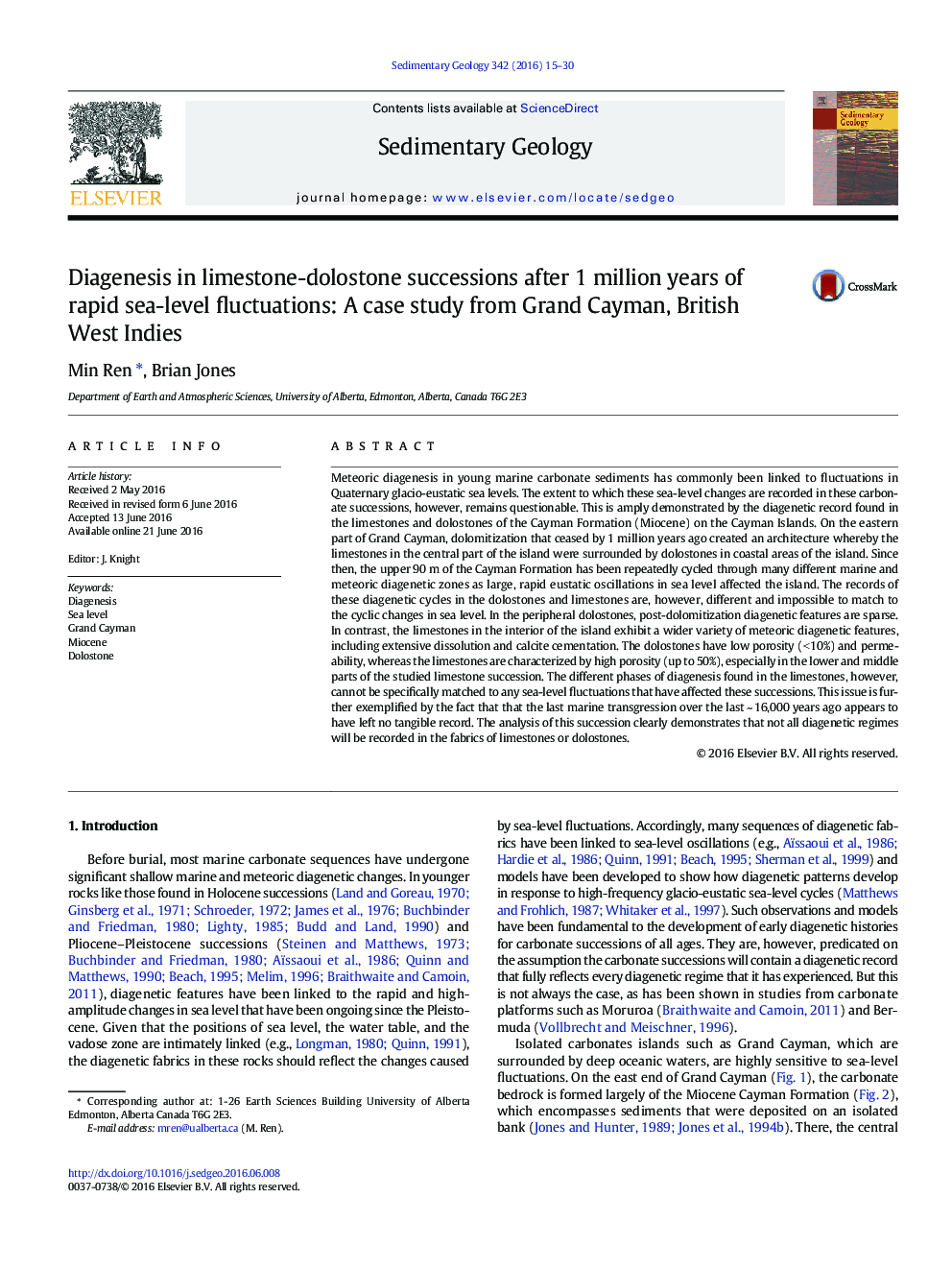| کد مقاله | کد نشریه | سال انتشار | مقاله انگلیسی | نسخه تمام متن |
|---|---|---|---|---|
| 4688978 | 1636021 | 2016 | 16 صفحه PDF | دانلود رایگان |

Meteoric diagenesis in young marine carbonate sediments has commonly been linked to fluctuations in Quaternary glacio-eustatic sea levels. The extent to which these sea-level changes are recorded in these carbonate successions, however, remains questionable. This is amply demonstrated by the diagenetic record found in the limestones and dolostones of the Cayman Formation (Miocene) on the Cayman Islands. On the eastern part of Grand Cayman, dolomitization that ceased by 1 million years ago created an architecture whereby the limestones in the central part of the island were surrounded by dolostones in coastal areas of the island. Since then, the upper 90 m of the Cayman Formation has been repeatedly cycled through many different marine and meteoric diagenetic zones as large, rapid eustatic oscillations in sea level affected the island. The records of these diagenetic cycles in the dolostones and limestones are, however, different and impossible to match to the cyclic changes in sea level. In the peripheral dolostones, post-dolomitization diagenetic features are sparse. In contrast, the limestones in the interior of the island exhibit a wider variety of meteoric diagenetic features, including extensive dissolution and calcite cementation. The dolostones have low porosity (< 10%) and permeability, whereas the limestones are characterized by high porosity (up to 50%), especially in the lower and middle parts of the studied limestone succession. The different phases of diagenesis found in the limestones, however, cannot be specifically matched to any sea-level fluctuations that have affected these successions. This issue is further exemplified by the fact that that the last marine transgression over the last ~ 16,000 years ago appears to have left no tangible record. The analysis of this succession clearly demonstrates that not all diagenetic regimes will be recorded in the fabrics of limestones or dolostones.
Journal: Sedimentary Geology - Volume 342, 1 August 2016, Pages 15–30